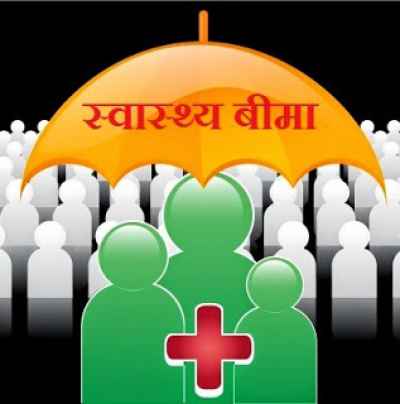 25-11-2019
25-11-2019
Majority of Indians don't have health cover: govt survey

 Insurance Alertss
Insurance AlertssNEW DELHI : A majority of Indians don't have health expenditure coverage, a report by the National Statistical Office (NSO), Ministry of Statistics and Programme Implementation, has said.
The ministry conducted the survey on household social consumption related to health during July 2017-June 2018 as part of 75th round of National Sample Survey (NSS).
According to the report, released on Saturday, 14% of the rural population and 19% of the urban population said they had health expenditure coverage. Over 13% of rural and 9% of urban population said they were covered by government sponsored health insurance.
A meagre 1% of rural population said they were covered by health insurance arranged by government/PSU as employer/ employer-supported health protection schemes. About 6% of urban population reported that they were covered by health insurance arranged by government/PSU as employer/ employer-supported health protection schemes.
Showing an extremely low coverage of health insurance plan, about 4% of urban population said they were covered by health insurance arranged by households with insurance companies.
The report also showed that private sector was catering to a larger proportion of population for medical treatment, both in rural and urban India, with the average medical expenditure per hospitalisation case (excluding childbirth) in rural India about Rs. 16,676 and in urban India about Rs. 26,475.
"In Government/public hospitals the expenditure was about Rs. 4,452 (about Rs. 4,290 in rural and Rs. 4,837 in urban areas). In private hospitals the expenditure was about Rs. 31,845 (about Rs. 27,347 in rural and Rs. 38,822 in urban areas)," the report said.
Data for the survey was collected from 1,13,823 households (64,552 in rural areas and 49,271 in urban areas), covering 5,55,115 persons (3,25,883 in rural areas and 2,29,232 in urban areas).
The government recently launched an ambitious health insurance schemed called Ayushman Bharat-Pradhan Mantri Jan Arogya Yojana (AB- PMJAY), also dubbed Modicare. Billed as the world's largest health assurance scheme, it aims to provide free health insurance of ₹5 lakh per family to nearly 40% of the population-more than 100 million poor and vulnerable families-based on the Socio Economic Caste Census. The premium payment expenditure is shared by the central and state governments.
In another survey on drinking water, sanitation, hygiene and housing condition as part of the 76th round of NSS, the government attempted to gather information on facilities of drinking water and sanitation.
It was done from data collected from 1,06,838 households (63,736 in rural areas and 43,102 in urban areas) from 5,378 sample villages in rural areas and 3,614 sample UFS blocks in urban areas, following a scientific survey methodology.
According to the survey, about 42.9% of the households in the rural areas used hand pump as the principal source of drinking water and about 40.9% of the households in the urban areas used piped water as the principal source of drinking water.
The survey report said, about 71.3% of the households in the rural and about 96.2% in the urban areas had access to latrine. "It may be noted that there may be respondent bias in the reporting of access to latrine as question on benefits received by the households from government schemes was asked prior to the question on access of households to latrine."

Source : Live Mint